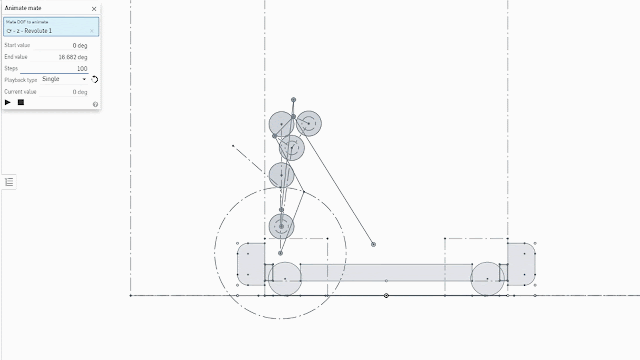Our team has a number of sub-groups all working in parallel.
Our design and manufacturing team are all pretty much nose to laptop/whiteboard getting information down, updating geometry in CAD, and starting to define subsystem volumes and integration points. These will dictate where and how each mechanism can mount, and what 3D space they can occupy - this is especially critical for some things like our collector that needs to fold out to collect a ball, but fold back in for safety, and to be legal!
Part of our manufacturing team has been busy preparing mock field elements that we can use to verify our robot functions, and practice with once the full robot is complete. We have enough space in our lab for about 1/3 of a full field, and our students practicing with the controls and realistic field pieces can be the difference between winning an event and second place.
Our software team programs the robot in Java. The controller we use is a bespoke National Instruments computer called a RoboRio (this is a required component for all teams). This week the software team set up new workspaces, downloaded and set up this years core libraries, and set up their Git repository to share and review code. (Yep, they get to use Git, lucky.)
Finally our business and marketing students have been working on some t-shirt designs for this year, and some written submissions that will be judged at the events.
Our week concluded on Saturday with the long, yet crucial systems integration meeting. (Personally, my favourite meeting of the year). Our design team, electrical team, and software team all get together to ensure everyone understands how each system on the robot will operate, how it will be controlled, our total motor allocation, sensors and positions, and more. Our software team uses this to prepare the state machines for the robot subsystems, and plan out what data needs to be shared between subsystems. Electrical starts looking at where and how they can wire the robot, supplying power to each motor and sensor. Design takes in feedback to accommodate the other subsystems, and any feedback for where and how to position sensors, motors, and etc.
This years meeting went very smooth, we are well within our power budget, and don't have too many control scheme challenges for software to wrangle.
Pictures, round 2!
-B
Our design and manufacturing team are all pretty much nose to laptop/whiteboard getting information down, updating geometry in CAD, and starting to define subsystem volumes and integration points. These will dictate where and how each mechanism can mount, and what 3D space they can occupy - this is especially critical for some things like our collector that needs to fold out to collect a ball, but fold back in for safety, and to be legal!
Part of our manufacturing team has been busy preparing mock field elements that we can use to verify our robot functions, and practice with once the full robot is complete. We have enough space in our lab for about 1/3 of a full field, and our students practicing with the controls and realistic field pieces can be the difference between winning an event and second place.
Our software team programs the robot in Java. The controller we use is a bespoke National Instruments computer called a RoboRio (this is a required component for all teams). This week the software team set up new workspaces, downloaded and set up this years core libraries, and set up their Git repository to share and review code. (Yep, they get to use Git, lucky.)
Finally our business and marketing students have been working on some t-shirt designs for this year, and some written submissions that will be judged at the events.
Our week concluded on Saturday with the long, yet crucial systems integration meeting. (Personally, my favourite meeting of the year). Our design team, electrical team, and software team all get together to ensure everyone understands how each system on the robot will operate, how it will be controlled, our total motor allocation, sensors and positions, and more. Our software team uses this to prepare the state machines for the robot subsystems, and plan out what data needs to be shared between subsystems. Electrical starts looking at where and how they can wire the robot, supplying power to each motor and sensor. Design takes in feedback to accommodate the other subsystems, and any feedback for where and how to position sensors, motors, and etc.
This years meeting went very smooth, we are well within our power budget, and don't have too many control scheme challenges for software to wrangle.
Pictures, round 2!
 |
| A mechanism called an unequal-length four-bar shows how we can stow and deploy a feature on the robot. |
 |
| Wood-crafting! The structure in the back is a wooden mock-up of the climbing apparatus we will see on the field. With this, we can practice and tune the climbing mechanism we put on our robot. |
 |
| Height mock-up of the main scoring structure. We are building a more complete and accurate model, but this worked for our prototype! |
-B

No comments:
Post a Comment